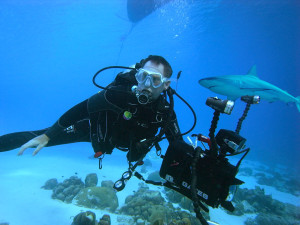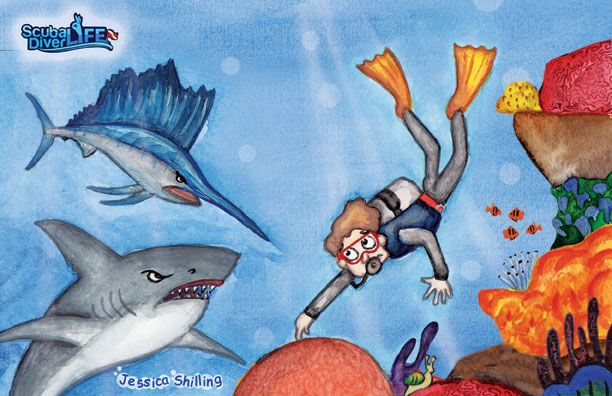These careless touches cause physical damage to the coral and can put it into a state of sever shock which can end in death or long lasting growth problems. It is important to understand that corals today are under so much stress environmentally from many threats like pollution, warming seas and diminishing aquatic life and one seemingly harmless touch could be all that is left to finish them off.
The result of human carelessness
Jeffrey Lombardo; director of the Ocean Awareness community, expert diver, aquatic cinematographer, television producer, and passionate ocean advocate has spent years working on various projects aimed to help people understand and appreciate the natural world and the upmost importance of protecting our oceans.
During his years of research Jeffrey has witnessed on various occasions the result of human carelessness on corals. During a 5 year period of time in the early 1990’s he documented the health of various coral reefs off of the island of Key West. On one section of reef he witnessed a snorkeler standing on top of a brain coral head 6 feet in diameter and 5 feet underwater. The coral head sustained what appeared to be minor damage. He then documented the brain corals location for future visits and continued to check the same coral head once a year for the next four years. Every year he noticed that the coral had increased dead polyps in the exact location the tourist had been standing. Sadly on his last visit to that brain coral he found it completely dead.
Coral Education with Jeffrey Lombardo
Q. Jeffrey, once the coral has been touched can the damage be reversed?
A. “I think the answer to this question is that corals can be resilient. However, if you introduce environmental stresses the chances of full recovery diminish greatly. Ken Nedimyer of the Coral Restoration Foundation touches and even cuts corals constantly in his attempts to propagate several important Caribbean species. These corals are physically cut into small bits and hung from lines in the current. What is important here is that these damaged corals are placed in an optimal environment and therefore rarely ever die from the procedure. In fact, most of these corals flourish and go on growing at an accelerated rate.”
Q. Why is the human touch so harmful to corals?
A. “Wherever we go, we come across various kinds of toxins which we absorb leaving our skin with a layer or residue of toxins at all times. Even if you wash your hands before touching coral you still can transfer small amounts of toxins, which the immune system of a coral cannot handle. In fact, washing your hands with soap can be even worse for potential contamination. Coral polyps use small net like structures lined with microscopic nematocysts to hold on to food it gathers in the current. These nematocysts, if touched by human skin, sometimes hold on to dead skin particles softened by water. In turn, the coral ingests these small skin particles and consequently the toxins as well.”
Q. Can the coral be touched if a diver uses gloves?
A. “Wearing gloves does not help the coral either. Last I checked, dive gloves are made from potentially toxic compounds. Neoprene, latex, and nylon are all made from potentially toxic substances.”
Q. Do you think that it is correct to police other divers? Should an inconsiderate careless diver be confronted after a dive?
A. “Every diver should police every other diver around them, I do. If I see a diver touching or kicking coral in a careless manner I immediately reprimand them and give them the hands off signal. I also speak with other divers I do not know on the boat on the way to a dive sight about keeping their hands to themselves.”
Q. What do you think should be done to address this issue?
A. “The vast majority of coral reefs on this planet are under tremendous environmental stresses from human pollution, etc. In the areas under the greatest stress the corals would certainly die if improperly touched. Most divers have little to no knowledge of these stressors and should adopt a strict “no touch” policy. In recent years, a large majority of diving organizations are becoming aware of this destructive practice and personally enforcing the new touch policy themselves.”
Tips to avoid touching the reefs
Proper buoyancy control is essential at all times. Inexperienced divers with little buoyancy control should not go on a dive that requires swimming over and too close to the reef risking crashing into it. Instructors should choose the appropriate dive site depending on the diver’s level ensuring the safety of both the diver and the reef.

Great buoyancy is vital but there are also other factors to keep in mind like fin placement. Not only is it terrible for the reef but it’s incredibly annoying going on a dive and getting stuck behind a diver that is kicking up sand everywhere and ruining your visibility. This is not only damaging for the reefs it also disrupts the aquatic life.
Another factor to keep in mind is your gauges. Make sure that they are properly strapped in and not dragging against the reef.
We much be aware of how our actions and decisions impact the reef and other ocean ecosystems worldwide.


